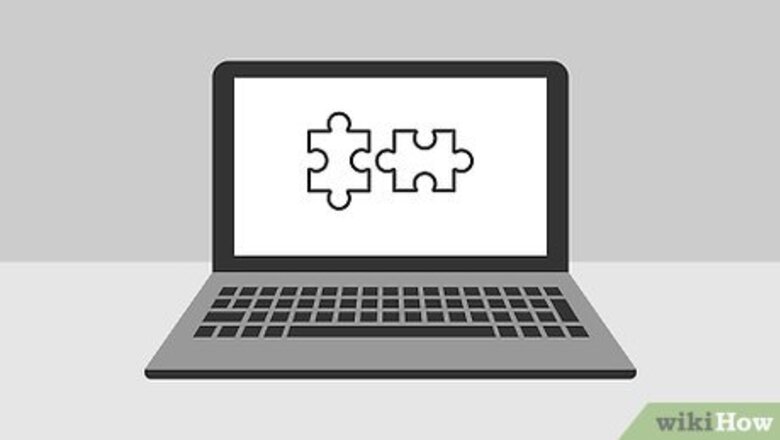
views
Using OBS Studio Encoding
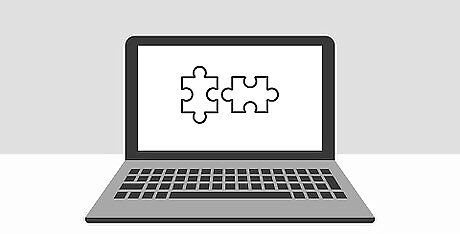
Understand what encoding means. Encoding a stream allows you to send stream content from a third-party application (in this case, OBS Studio) to a streaming service (e.g., YouTube or Twitch). Since many streaming services don't support direct webcam streaming, this is the only way to stream on some platforms. Streaming from an encoder often results in much higher-quality live streaming than does using a website's built-in streaming with your webcam. When encoding a stream, you'll have to retrieve a key and an address from your selected streaming service and then plug both piece of information into OBS Studio (or any other streaming application).
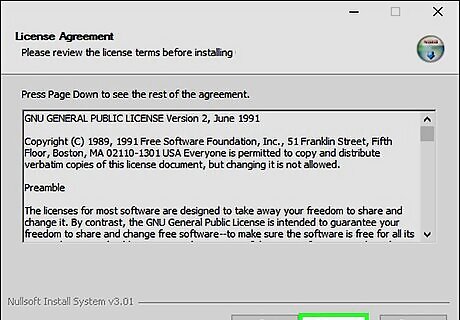
Install your webcam if necessary. If your computer doesn't already have a built-in webcam, you'll need to attach and set up an external USB webcam before you'll be able to stream. You can buy webcams in virtually any tech store or large online marketplace (e.g., Amazon). They tend to range in price depending on their quality.
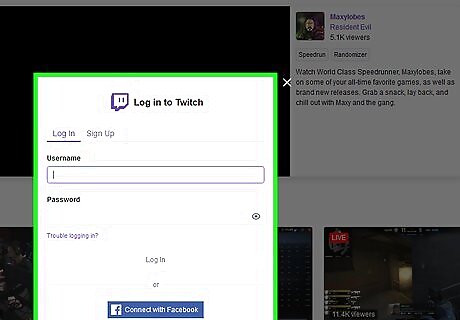
Open your service's "Live Stream" section and retrieve your stream key. In order to link your webcam's stream to your preferred service, you'll need to retrieve a link that allows you to do so from your service. This process varies from service to service: Twitch - Go to https://www.twitch.tv/ and log in if necessary, click your username in the upper-right corner, click Dashboard, click the Channel tab below "Settings" on the left side of the page, click Stream Key, click Show Key, click I understand, and copy your key. Facebook - Go to https://www.facebook.com/ and log in if necessary, click Live Video, click the Connect tab, and copy the "Stream Key" text box's contents. YouTube - Go to https://www.youtube.com/live_dashboard_splash and log in if necessary, click Stream now on the left side of the page, click Reveal next to the "Stream name/key" box, and copy the stream key.
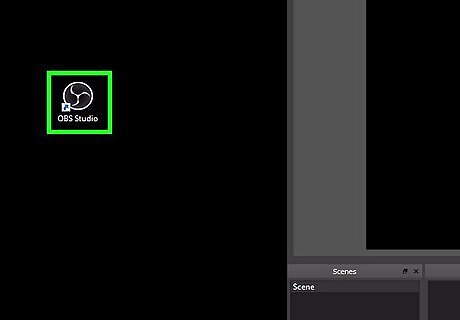
Open OBS Studio. Its app icon resembles a three-bladed fan on a black background. If you haven't yet installed OBS Studio, go to https://obsproject.com/download in your browser, select your operating system, click Download Installer, and install it before proceeding.
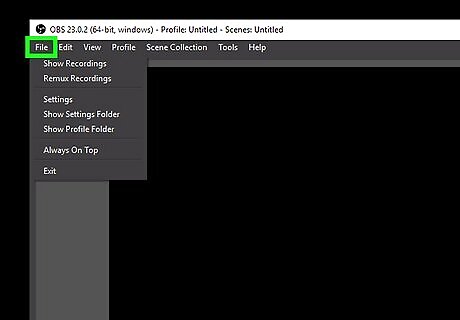
Click File. This option is in the upper-left side of the window. On a Mac, click OBS Studio in the upper-left corner of the screen.
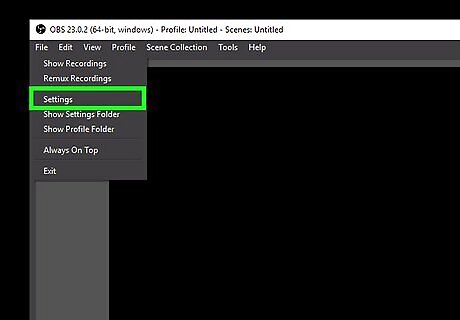
Click Settings. It's in the File drop-down menu. Doing so opens the Settings window. On a Mac, click Preferences... in the drop-down menu.
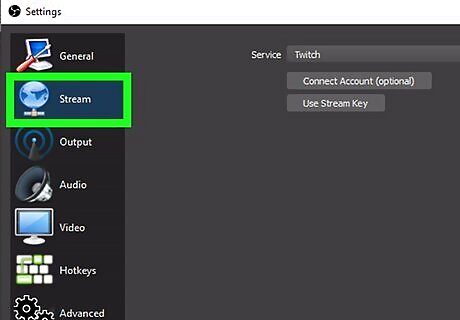
Click the Stream tab. You'll find this on the left side of the window.

Select a streaming service. Click the "Service" drop-down box, then click your service's name (e.g., Twitch) in the drop-down menu.
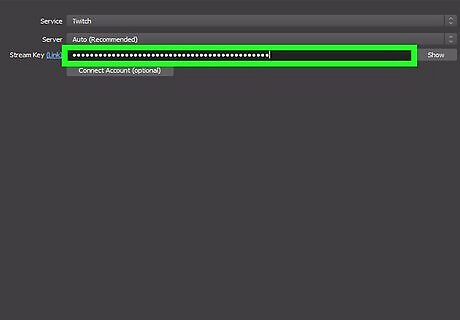
Enter your stream key. Click the "Stream key" text box, then paste in your stream key by pressing Ctrl+V (Windows) or ⌘ Command+V (Mac).

Click Apply, then click OK. Both options are at the bottom of the page. This will save your settings and close the window. If you don't see Apply and OK on a Mac, just close the Preferences window.
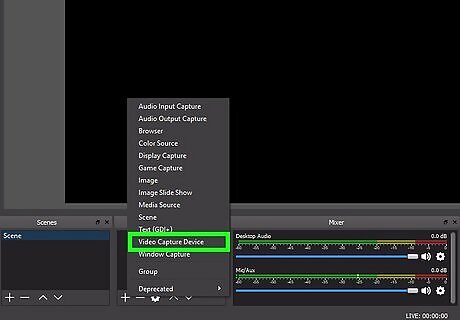
Add your webcam to the stream. By default, OBS Studio will record your desktop. You'll need to add your webcam by doing the following: Click + below the "Sources" box at the bottom of the page. Click Video Capture Device Check the "Create new" box and enter a title. Click OK Select your webcam. Click OK
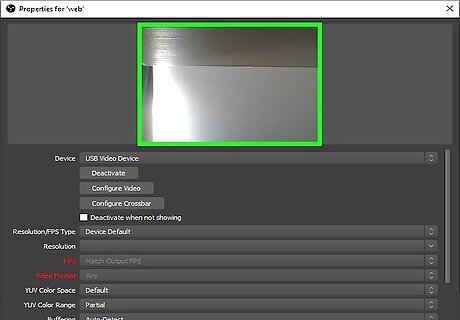
Adjust your webcam's view. You can click and drag the bottom-right corner of the red box that's surrounding your webcam in order to enlarge the amount of screen space that your webcam covers. Skip this step if you're happy with the current webcam settings.
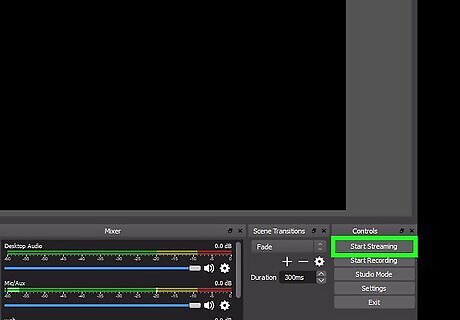
Click Start Streaming. It's a button in the lower-right side of the OBS Studio window. Your stream will begin.
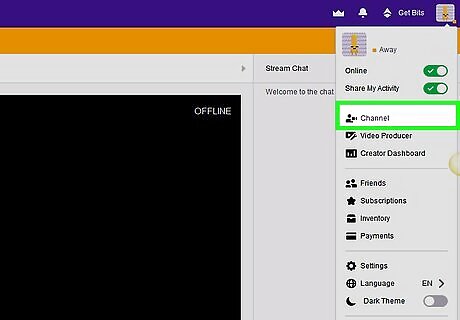
Add your OBS stream to your preferred platform. Depending on your selected service, this process will vary: Twitch - You'll go live automatically. Open your Channel page to view the stream. Facebook - Click Go Live in the lower-right side of the Connect tab from which you retrieved your stream key earlier. YouTube - Click GO LIVE on the Stream now tab from which you retrieved your stream key earlier.
Using YouTube's Go Live
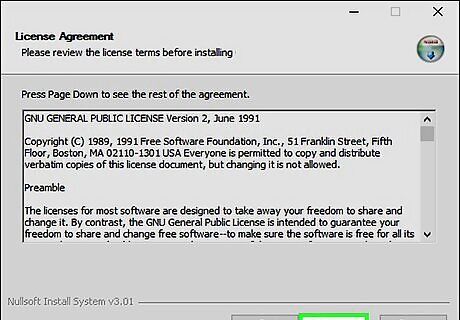
Install your webcam if necessary. If your computer doesn't already have a built-in webcam, you'll need to attach and set up an external USB webcam before you'll be able to stream. You can buy webcams in virtually any tech store or large online marketplace (e.g., Amazon). They tend to range in price depending on their quality.
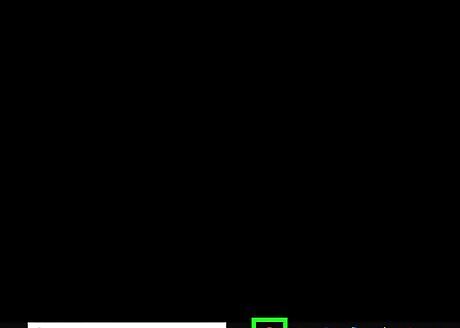
Make sure that you're using Google Chrome. As of April 2018, streaming to YouTube directly from your computer's webcam is only available on Google Chrome. Streaming directly from your webcam is only available on Chrome versions 60 and up. If you're still using an older version of Chrome, update it before proceeding.
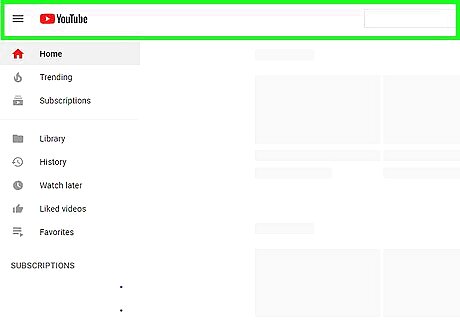
Open YouTube. Go to https://www.youtube.com/ in your computer's web browser. This will open your YouTube home page if you're logged into your Google Account. If you aren't logged in, click SIGN IN in the upper-right side of the page, then enter your email address and password when prompted.
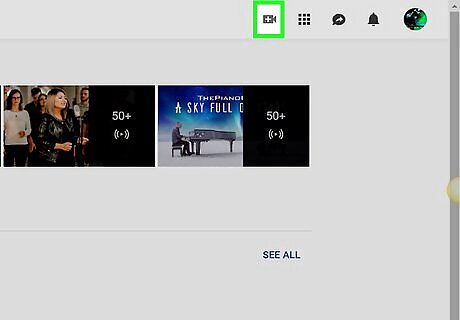
Click the "Upload" Android 7 Videocamera icon. It's the video camera-shaped icon in the upper-right side of the page. A drop-down menu will appear.
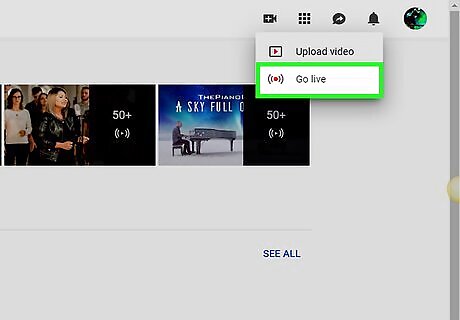
Click Go live. This option is in the drop-down menu. Doing so opens the live-streaming section of YouTube.
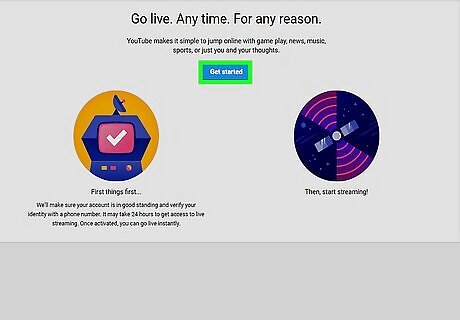
Click Get started. It's a blue button in the middle of the page. This will prompt YouTube to begin validating your account, which will unlock the ability to live-stream in 24 hours. If you've already activated your account for streaming on YouTube, skip to the "Click Camera" step.
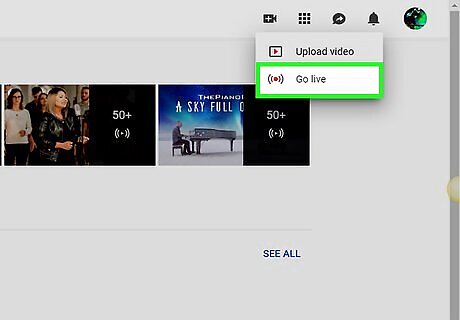
Re-open the live-streaming page after 24 hours. Once your account is able to stream, go back to YouTube, click the "Upload" button appropriate to your browser, and select the Go live option.
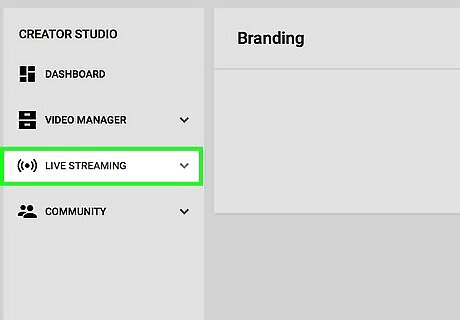
Click Camera. It's a tab on the left side of the page. This option allows you to stream directly from your webcam without having to download an encoder.
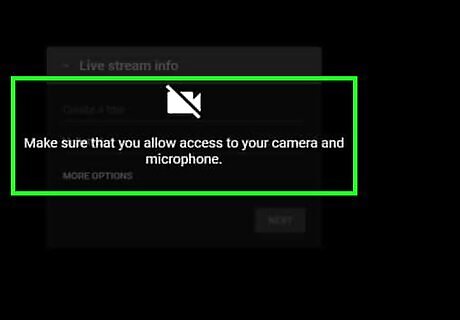
Click Allow when prompted. This notification will appear in the upper-left corner of the window. Doing so allows Chrome to use your webcam and microphone.
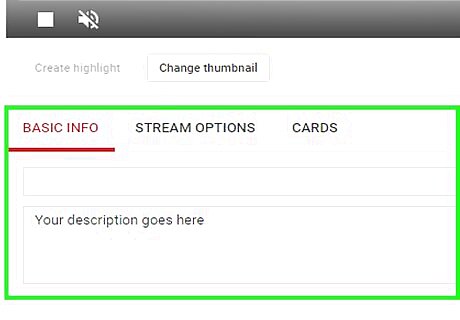
Enter your stream's information. Type the title and description for your stream into the "Title" and "Description" text boxes, then select a thumbnail if desired.
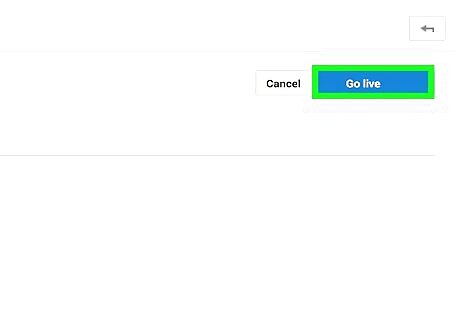
Click GO LIVE. It's a blue button. Doing so will prompt YouTube to begin streaming from your webcam.
Using Facebook Live Stream
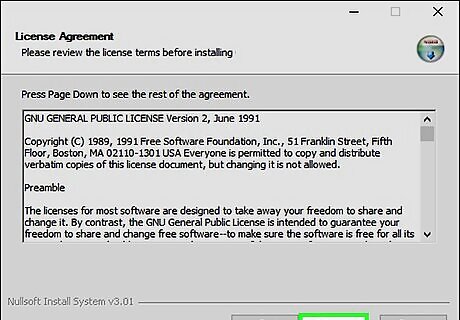
Install your webcam if necessary. If your computer doesn't already have a built-in webcam, you'll need to attach and set up an external USB webcam before you'll be able to stream. You can buy webcams in virtually any tech store or large online marketplace (e.g., Amazon). They tend to range in price depending on their quality.
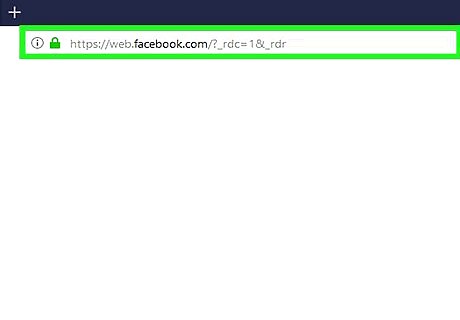
Open Facebook. Go to https://www.facebook.com/ in your computer's web browser. This will open your Facebook News Feed if you're logged in. If you aren't logged into Facebook, enter your email address (or phone number) and password in the upper-right side of the page, then click Log In.
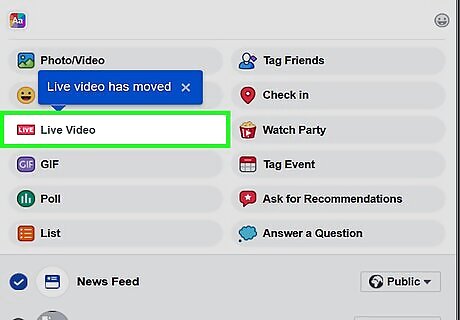
Click Live Video. It's near the top of the News Feed page, just above the text box where you would usually post a status. Doing so opens the "Create a Live Stream" pop-out menu.
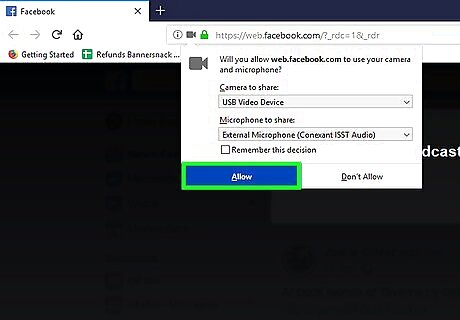
Allow Facebook to access your webcam and microphone. Click Allow (or similar) when prompted to allow Facebook to use your webcam, then do the same if asked to allow access to your microphone.
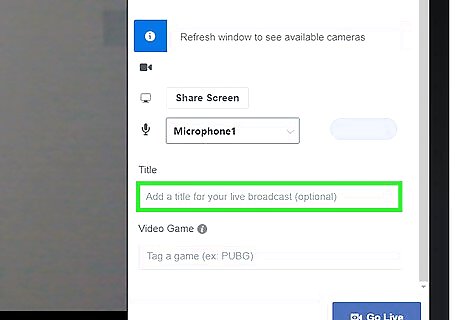
Add a description to the video. In the "Say something about this live video..." text box, type in a description for your stream. This is optional, but recommended.
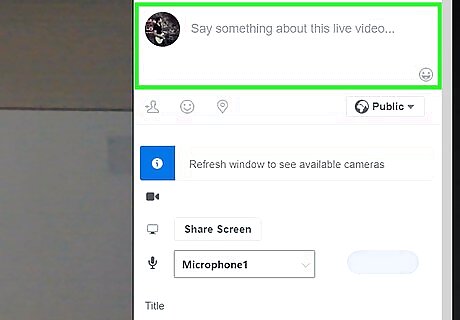
Add a title. If you want to place a title on your stream, type your title into the "Title" heading near the bottom of the pop-out menu.
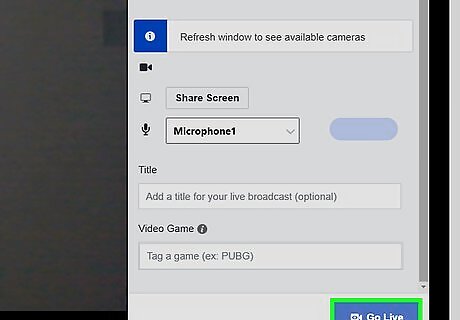
Click Go Live. It's in the bottom-right corner of the page. Doing so causes your webcam to begin streaming to Facebook. You can close the live stream at any time by clicking End Live Video and then clicking End when prompted.




















Comments
0 comment